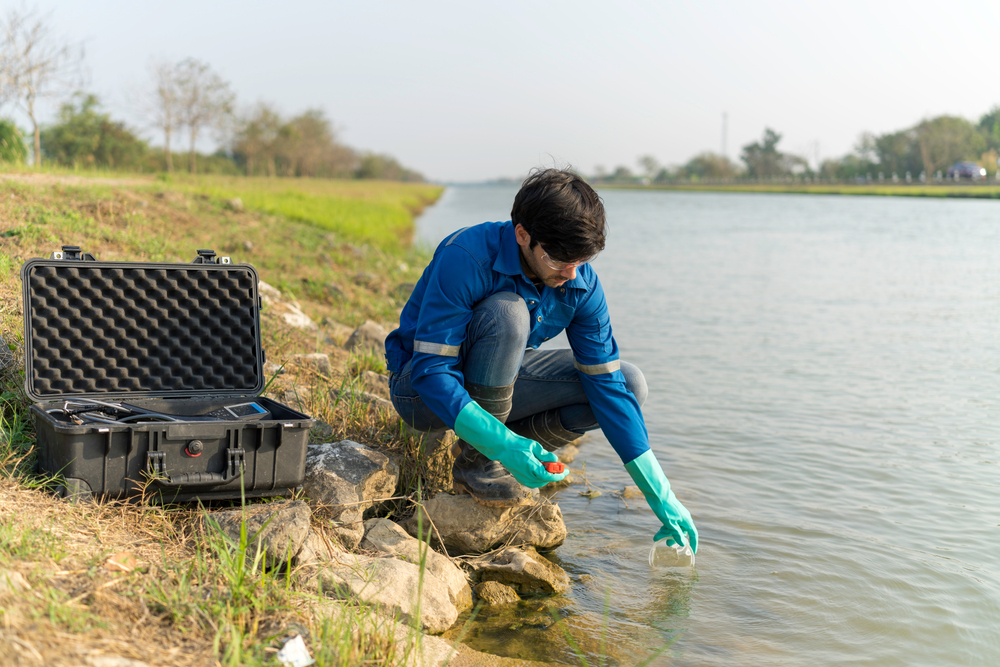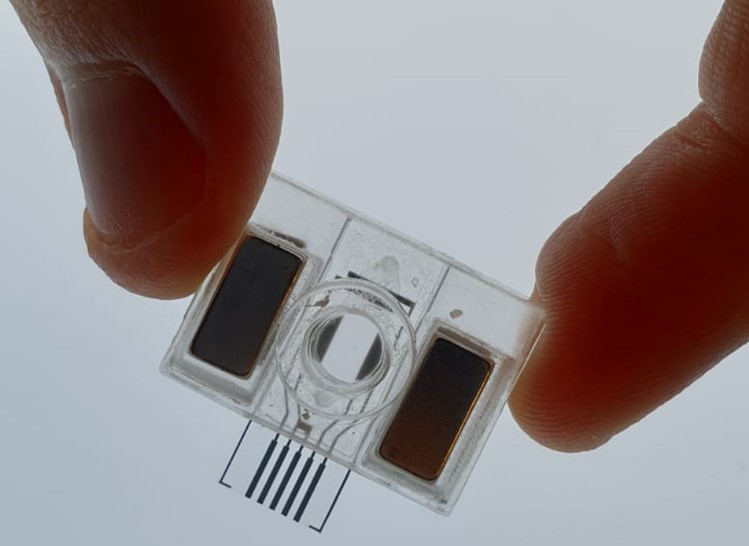
From Lab to Lake: Immuno – SAW sensing for organic contaminants and biotoxins
Human health and natural ecosystems face significant risks from increasing anthropogenic marine and freshwater pollution. The AquaBioSens project aims to tackle this problem by developing novel, handheld devices for aquatic pollution monitoring. These devices will use antibody-based assays combined with surface acoustic wave (SAW) sensing technology.
The Problem
Water covers approximately 75% of our planet’s surface, and is essential for the production of oxygen, food and drinking water [1]. With the gradual increase of economic development and an ever-growing population, water resources are currently experiencing unprecedented pressures due to human activity [2]. Anthropogenic inputs such as sewage, agricultural waste/runoff and industrial waste may result to long-lasting effects on marine and freshwater ecosystems, as well as human health. Furthermore, global warming exacerbates these issues by promoting the overgrowth of harmful organisms that threaten water and food safety, public health, and ecosystem function.
The need
To this end, there is an urgent need for systematic monitoring and early detection of emerging pollutants and biotoxins in impacted aquatic environments. Current methods for measuring aquatic biohazards are mostly laboratory-based, time-consuming, and require complex and expensive equipment (e.g., chromatographic and mass spectrometry approaches) [3]-[6]. Additionally, sample pre-treatment procedures, such as liquid-liquid or solid-phase extraction, are often necessary, making the analysis more labour-intensive and less user-friendly.
Proposed Approach
The “AquaBioSens” project aims to deliver innovative, low-cost, point-of-care biosensing technologies for the rapid detection of aquatic hazards and pollution by non-specialist end-users. A key component of the project is to combine low-cost antibody assays with a new handheld acoustic wave sensing device. Surface acoustic sensing is a well-established technique in the Biosensors Lab of IMBB-FORTH with demonstrated successful applications [7]-[10]. Notably, integrating SAW technologies with enzyme-linked immunosorbent assays (ELISAs) has recently shown promising sensitivity results [11].
The immune-SAW sensing experiments will target various emerging pollutants due to their harmful effects on aquatic life and humans. Our research will focus on harmful algal toxins, antibiotics, pesticides and hormones [12]-[15]. Overall, the developed immune-SAW sensors aim to provide a novel, handheld platform for fast (less than one hour) and sensitive (femtomolar level) on-site quantification of aquatic pollution.

Author: Dr. Despoina Varamogianni-Mamatsi
References
[1] Restore our Ocean and Waters by 2030. Implementation Plan. European Missions. European Commission, 2021.
[2] Hariram, N.P., et al., Sustainability, 2023. 15(13): p. 10682.
[3] Hladik, M.L., et al., Methods of Analysis, Determination of Pyrethroid Insecticides in Water and Sediment Using Gas Chromatography/mass Spectrometry. 2009: U.S. Geological Survey.
[4] Yao, J., et al., Food Addit Contam Part A, 2022. 39(3): p. 531-541.
[5] Finnah, A., Residue Monograph prepared by the meeting of the Joint FAO/WHO Expert Committee on Food Additives (JECFA), 85th Meeting 2017.
[6] Cyanobacterial toxins: saxitoxins. Background document for development of WHO Guidelines for drinking-water quality and Guidelines for safe recreational water environments. 2020, World Health Organization: Geneva.
[7] Tsougeni, K., et al., Sens Actuators B Chem, 2020. 320: p. 128345.
[8] Milioni, D., et al., Anal Chem, 2020. 92, p. 8186-8193.
[9] Naoumi, N., et al., ACS Sens, 2022. 7(2): p. 495-503.
[10] Naoumi, N., et al., Analyst, 2024. 149: p. 3537-3546.
[11] Huang, Y., et al., Sens Actuators Rep, 2021. 3: p. 100041
[12] Narahashi, T., Adv Insect Physiol, 1972. 8 (1) APL.
[13] Basile, A., et al., Current Trends and Future Developments on (Bio-) Membranes in: Reverse and Forward Osmosis: Principles, Applications, Advances, 2020.
[14] Polianciuc, S.I., et al., Med Pharm Rep, 2020. 93(3): p. 231–240. [15] Anderson, D. M., et al., Ann Rev Mar Sci, 2012. 4(1): p. 143–176.
Keywords
Aquatic pollution, organic contaminants, biotoxins, biosensors, surface acoustic waves, immunoassays





